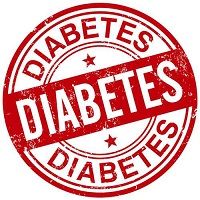Article
Task Force Screening Guidelines Missing Diabetes?
Author(s):
The latest United States Preventive Service Task Force screening guidelines for diabetes, released in October 2015, miss 55% of high-risk individuals with prediabetes or diabetes, a new study shows.

The latest United States Preventive Service Task Force screening guidelines for diabetes, released in October 2015, miss 55% of high-risk individuals with prediabetes or diabetes, a new study shows.
The guidelines recommend doctors screen for diabetes in all patients between 40 and 70 years of age who are overweight or obese. While this represents a high-risk group, many people outside these age and weight ranges still develop diabetes, especially among certain racial and ethnic populations.
"We were interested to do this study because of population trends that racial and ethnic minorities are developing diabetes at younger ages and lower weights than whites," said senior author, Matthew O’Brien, MD, assistant professor of medicine from Northwestern University Feinberg School of Medicine in Chicago.
O’Brien and colleagues looked at electronic health record data from 50,515 adults primary care patients at six community health centers in the Midwest and Southwest between 2008 and 2013. They excluded patients who already had diabetes at the beginning of the study. Using the guidelines, the identified those who should be screened. Then they looked at who actually developed diabetes.
The results showed that only 54 percent of white patients who developed dysglycemia fit well within the new screening guidelines. Worse yet, the guidelines only captured 50 percent of African Americans and 37 percent of Latinos.
“The screening criteria had lower sensitivity in all racial/ethnic minority groups compared to whites,” the researchers wrote in the report published online July 12 in PLoS Medicine.
By missing so many people at risk for diabetes, doctors lose an opportunity to advise patients on preventive measures such as improving their nutrition, exercising, and taking medications. Moreover, since the Affordable Care Act requires coverages of all services that are required by the USPST, those who fall outside the guideline parameters who want screening may have to pay out of pocket for the tests.
"Preventing and treating diabetes early is very important, especially in this setting of community health centers, where many of their socioeconomically disadvantaged patients face barriers to following up regularly," said O'Brien. "If you miss someone now, it might be years before they come back, at which point they have overt diabetes and maybe even complications, like heart attacks or strokes."





